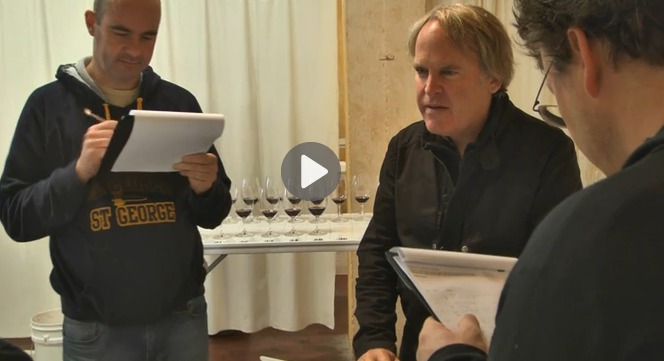I went to Australia a couple weeks ago because of a personal challenge. In fact, it was more of dare from an Aussie winemaker whom I met last year at the Royal Melbourne Wine Show. He bet me that if I came to judge at this year’s Barossa Wine Show I would find many balanced, drinkable and characterful wines – bottles I would call #realaussiewine.
If you haven’t been using social media for a while, #realaussiewine is a term a wine buddy (I guess I should use the word mate!) and I created in late 2011 when I went to Australia for the first time in search of wines of elegance and character – not the high-octane, undrinkable wines that many of us have come to loath from the New World.
Anyways, to cut a long story short, I didn’t have high expectations for Barossa Valley when Ian Hongell, senior winemaker of Peter Lehmann Wines, convinced me to go to for a week as international judge in the area’s annual wine competition. I was afraid that many of the wines, particularly reds, would be just too big and alcoholic. What else would you expect? Barossa was ground central for such wines particularly in the early 2000s.
But what I found was the opposite. I tasted over 400 wines in three days, and there were tons of #realaussiewines. In fact, I was hard-pressed to find jammy, thick and alcoholic wines.
The other judges I tasted with – all Australian – were not looking for big and powerful wines either. They believe that wines made with overripe grapes, wines from “dead fruit” as some of them put it, show no unique terroir-driven character. For them, such wines have had their goodness and character baked out of them at the beginning from using grapes left too long on the vine.
Throughout my daily tastings, I really was impressed with a huge range of wines from flavorful and lively riesling and roussane (and even vermentino!), to stylish and elegant shiraz, grenache, and cabernet sauvignon. Shiraz and riesling are of course the gold standard in Barossa winemaking.
What’s interesting is that Barossa historically made wines – including red wines – with low alcohol. I had many conversations with winemakers and wine writers who all pointed out that the great Barossa wines of the 1950s, 1960s, 1970s and 1980s were all around 12 to 12.5% alcohol. “It was just you Americans that made high alcohol wines from Barossa popular for a while,” said Nick Stock, one of the top wine writers in Australia.
I told Nick and everyone else in the Australian wine world that I can’t be blamed for the high-octane wine fad in America. Most Australians blame Robert Parker, by the way. Hell, I didn’t even review Australian wine as a critic until I left The Wine Spectator in July 2010.
But all that doesn’t really matter now. Most top wine producers in Australia are making balanced wines that emphasize their unique soils and climates – wines that underline their somewhereness and not the heavy hand of the winemaker. Over the coming weeks I’ll be publishing my reports, notes, scores and videos on Barossa and Australia at large. Stay tuned.

Click for video on James’ experiences at the Barossa Wine Show.
